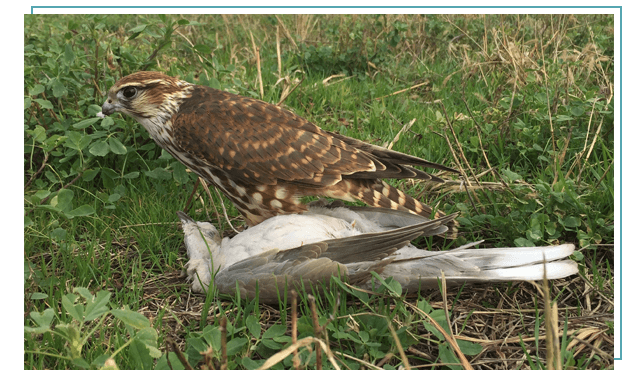Hunting

A falcon rises through the air when flying against the wind, not before it.
Winston Churchill
Falconry is not only the art of hunting game in its natural environment, whilst communicating with wildlife; it is also the establishment of a direct connection with a bird of prey; the exhilaration and beauty of watching it take flight, which in itself is a breathtaking and exciting experience. Falconry is a wonderful pursuit to be enjoyed.


Every year, the long forgotten art of falconry is becoming more and more popular. It should be noted that such activities are an art form; based upon the hunter’s relationship with the natural world. Only shared goals and a strong partnership will allow success to be achieved. Hunters in the part were able to understand the nature of hunting birds and therefore received in return a memorable experience. Anyone who wants to understand the mysteries of ancient falconry should try it. Anyone who has ever had a bird of prey perched on their hand, has able to gain the animal’s trust and obedience, will have really felt at one with nature.

To properly train and, in hunting terms ‘pass’ birds of prey, you must firstly love the bird and secondly have a lot of patience and some spare time.

If the bird is being brought up to work as a hunting bird, it should see its future handler as much as possible. The young bird should be raised in a nesting box and fed small pieces of meat mixed with finely chopped bones and fur. Whilst gaining strength, a bird will eat approximately two pigeons a day in five sittings. When feeding the bird in its nest, the handler should put the glove on and get the bird to sit on it. As a chick, the bird needs to get used to sitting on the glove, so as to step-by-step be trained to sit on the arm of the hunter, each time receiving food. The hand of the Falconer, covered with a glove, should become the safest and most attractive place for the bird. The handler should slowly start to wear it while the bird eats. This is why the education and training of a bird of prey is known as ‘nurturing’ it.

The next step is for the bird to be taught to fly to the hand of the hunter from a perch-arc, covered with soft cloth or synthetic grass. As soon as Falcon starts to ‘go’ (fly) to the hand from 30-50 meters away, it is taught to come from very far away, by waving the bait. The bait is a feather toy from a pair of pigeon wings.

After this, training with game should begin. A young bird of prey is not able to hunt, however at the same time it possesses the instinct to hunt, these urges therefore need to be awakened and developed. The bird of prey should firstly work with injured game or pigeons, getting the novice used to killing live prey.

A trained bird of prey is a mature one, if it eats whilst sitting on the handler’s hand, sit calmly on the perch before the falconer picks them up and whilst hunting stalks game, flying from their owner’s glove and then returning when called.
Material from A. Borodina
